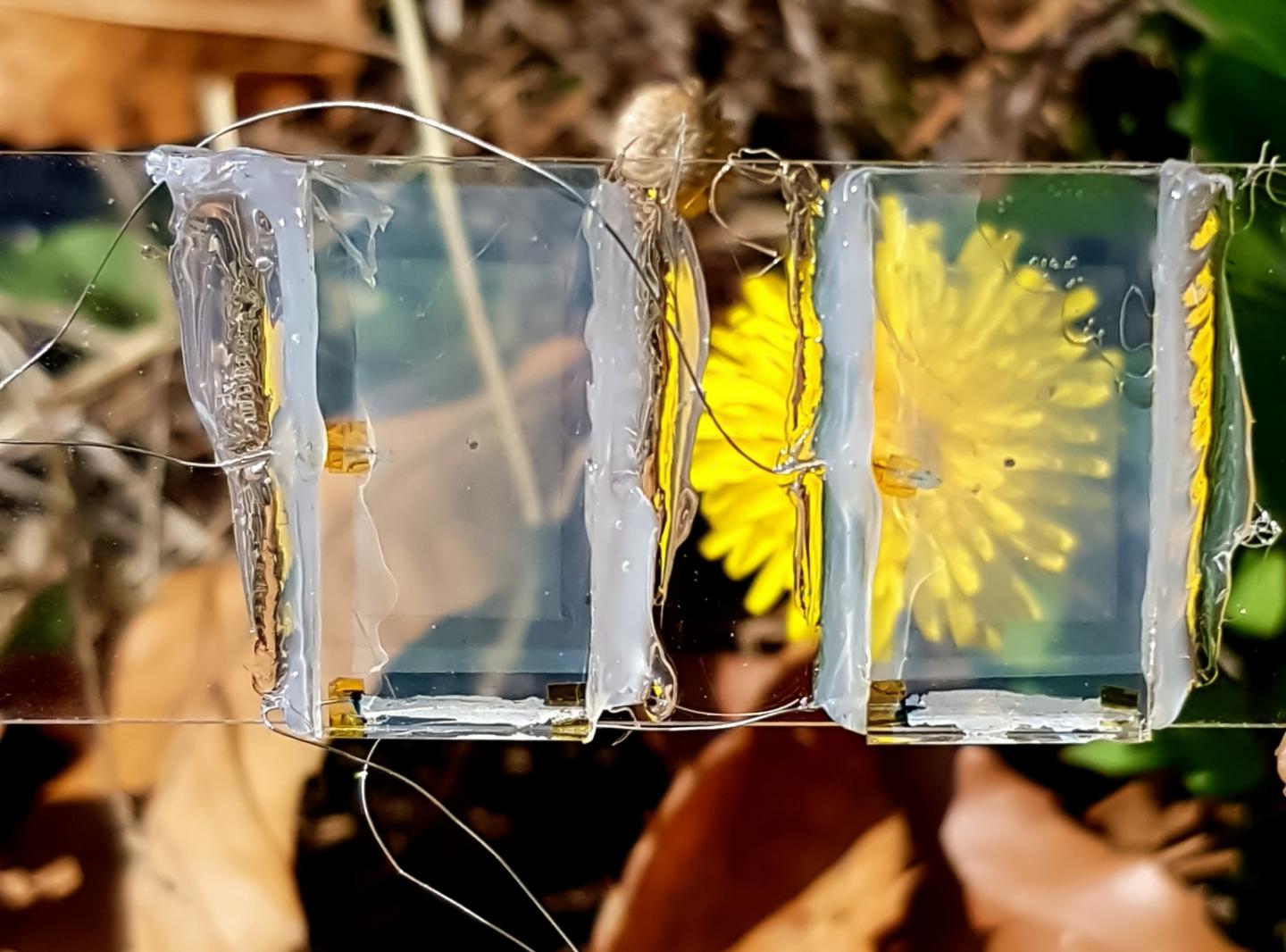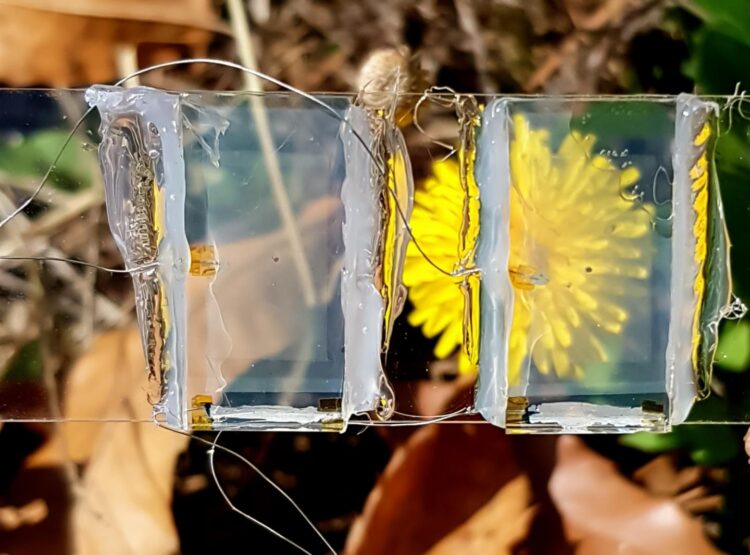A new study led by scientists from Incheon National University in Korea shows how to make a fully transparent solar cell

Credit: Joondong Kim from Incheon National University
Five years after the Paris climate agreement, all eyes are on the world’s progress on the road to a carbon-free future. A crucial part of this goal involves the energy transition from fossil fuels to renewable sources, such as sun, water, wind and wave energy. Among those, solar energy has always held the highest hope in the scientific community, as the most reliable and abundant energy source on Earth. In recent decades, solar cells have become cheaper, more efficient, and environment friendly. However, current solar cells tend to be opaque, which prevents their wider use and integration into everyday materials, constrained to being lined up on roofs and in remote solar farms.
But what if next-generation solar panels could be integrated to windows, buildings, or even mobile phone screens? That is the hope of Professor Joondong Kim from the Department of Electrical Engineering at Incheon National University, Korea. In a recent study published in Journal of Power Sources, he and his colleagues detail their latest invention: a fully transparent solar cell. “The unique features of transparent photovoltaic cells could have various applications in human technology,” says Prof. Kim.
The idea of transparent solar cells is well known, but this novel application where scientists have been able to translate this idea into practice is a crucial new finding. At present, the materials making the solar cell opaque are the semiconductor layers, those responsible for capturing light and translating it into an electrical current. Hence, Prof. Kim and his colleagues looked at two potential semiconductor materials, identified by previous researchers for their desirable properties.
The first is titanium dioxide (TiO2), a well-known semiconductor already widely used to make solar cells. On top of its excellent electrical properties, TiO2 is also an environment-friendly and non-toxic material. This material absorbs UV light (a part of the light spectrum invisible to the naked eye) while letting through most of the visible light range. The second material investigated to make this junction was nickel oxide (NiO), another semiconductor known to have high optical transparency. As nickel is one of the mist abundant elements on Earth, and its oxide can easily be manufactured at low industrial temperatures, NiO is also a great material to make eco-friendly cells.
The solar cell prepared by the researchers was composed of a glass substrate and a metal oxide electrode, on top of which they deposited thin layers of the semiconductors (TiO2 first, then NiO) and a final coating of silver nanowires, acting as the other electrode in the cell. They ran several tests to evaluate the device’s absorbance and transmittance of light, as well as its effectiveness as a solar cell.
Their findings were encouraging; with a power conversion efficiency of 2.1%, the cell’s performance was quite good, given that it targets only a small part of the light spectrum. The cell was also highly responsive and worked in low light conditions. Furthermore, more than 57% of visible light was transmitted through the cell’s layers, giving the cell this transparent aspect. In the final part of their experiment, the researchers demonstrated how their device could be used to power a small motor. “While this innovative solar cell is still very much in its infancy, our results strongly suggest that further improvement is possible for transparent photovoltaics by optimizing the cell’s optical and electrical properties,” suggests Prof. Kim.
Now that they have demonstrated the practicality of a transparent solar cell, they hope to further improve its efficiency in the near future. Only further research can tell whether they will indeed become a reality, but for all intents and purposes, this new technology opens a–quite literal–window into the future of clean energy.
###
Reference
Authors: Thanh Tai Nguyen (a), Malkeshkumar Patel (a), Sangho Kim (a), Rameez Ahmad Mir (b), Junsin Yi (c), Vinh-Ai Dao (d,e), Joondong Kim (a)
Title of original paper: Transparent photovoltaic cells and self-powered photodetectors by TiO2/NiO heterojunction
Journal: Journal of Power Sources
DOI: 10.1016/j.jpowsour.2020.228865
Affiliations:
- (a) Photoelectric and Energy Device Application Lab (PEDAL), Multidisciplinary Core Institute for Future Energies (MCIFE) and Department of Electrical Engineering,
Incheon National University, 119, Academy Road Yeonsu, Incheon, 22012, Republic of Korea
(b) Functional Materials Lab, SPMS, Thapar Institute of Engineering and Technology, Patiala, Punjab, India
(c) College of Information and Communication Engineering, Sungkyunkwan University, Suwon 16419, Republic of Korea
(d) FM&D Lab., Institute of Fundamental and Applied Sciences, Duy Tan University, Ho Chi Minh City 700000, Vietnam
(e) Faculty of Electrical-Electronic Engineering, Duy Tan University, Da Nang 550000, Viet Nam
About Incheon National University
Incheon National University (INU) is a comprehensive, student-focused university. It was founded in 1979 and given university status in 1988. One of the largest universities in South Korea, it houses nearly 14,000 students and 500 faculty members. In 2010, INU merged with Incheon City College to expand capacity and open more curricula. With its commitment to academic excellence and an unrelenting devotion to innovative research, INU offers its students real-world internship experiences. INU not only focuses on studying and learning but also strives to provide a supportive environment for students to follow their passion, grow, and, as their slogan says, be INspired.
Website: http://www.
About Professor Joondong Kim from Incheon National University
Joondong Kim is a Professor at the Department of Electrical Engineering in Incheon National University, Korea, and the head of Multidisciplinary Core Institute for Future Energies (MCIFE). He majored in electrical engineering and earned his PhD in 2006 from the University at Buffalo, State University of New York, USA. His research is focused on the design of functional materials and neo-conception devices, neuromorphic memories, photosensors, and transparent photovoltaics. He has published about 230 SCI papers and holds 150 patents.
Media Contact
Joondong Kim
[email protected]
Original Source
http://www.
Related Journal Article
http://dx.





